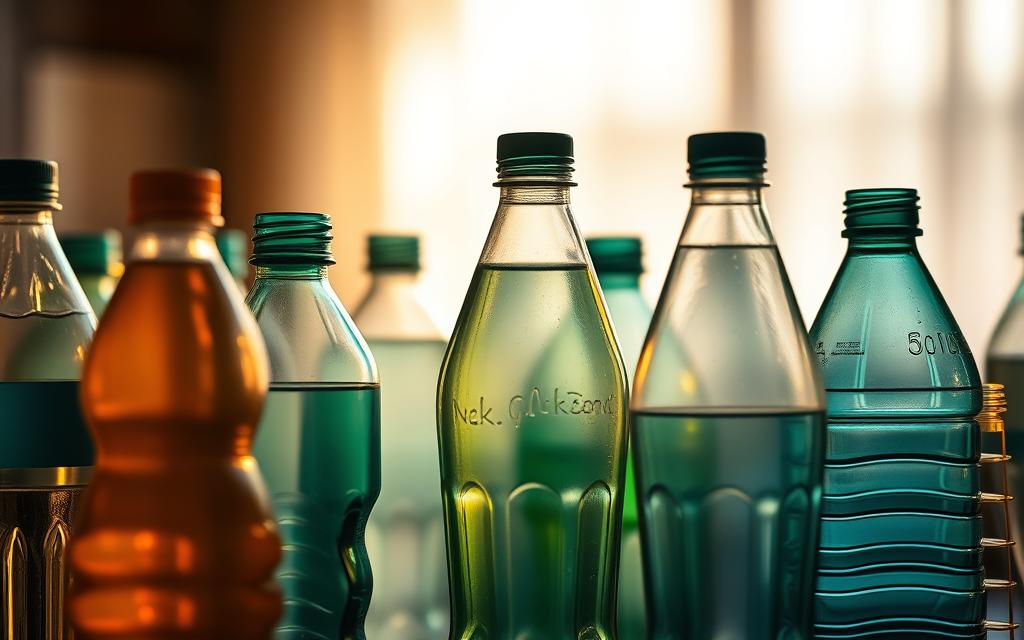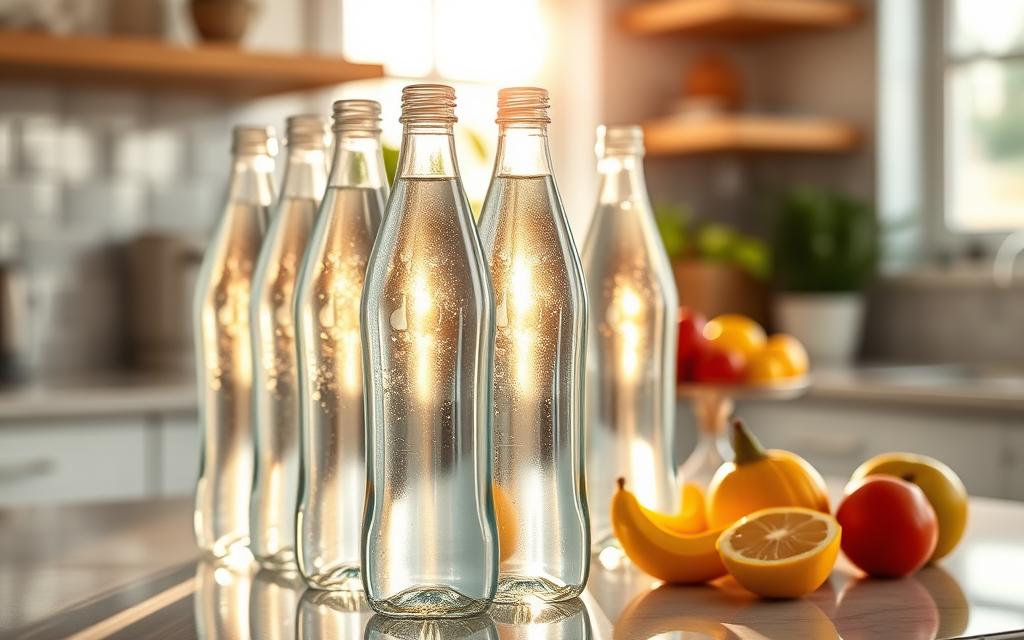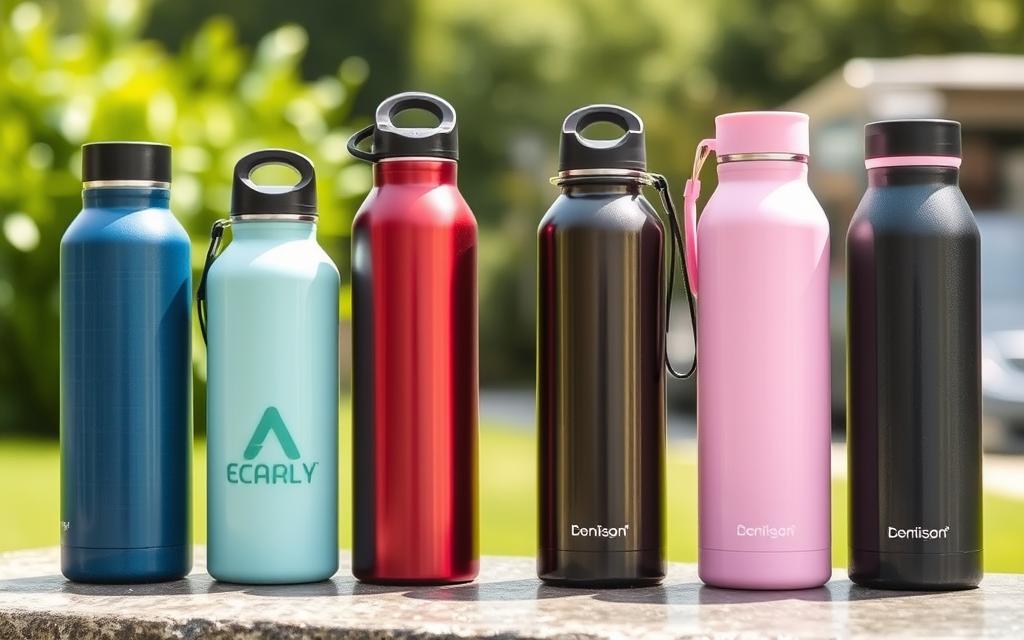Ever thought about how your daily water bottle might affect your hormones? I’ve been looking into this, and it’s really interesting. It seems plastic water bottles could be messing with our hormones.
Studies show drinking from plastic might change our hormone levels in big ways. So, can plastic water bottles really affect our hormones? The answer might shock you.
We’re going to explore the secret world of chemicals in your water bottle. We’ll look into how plastics might mess with your hormones. It’s all about the science behind it.
Key Takeaways
- Plastic water bottles may contain chemicals that disrupt hormone function
- Some plastic materials can leach harmful substances into drinking water
- Hormonal disruption can potentially impact overall health and wellness
- Awareness is the first step in making safer hydration choices
- Scientific research continues to investigate long-term effects of plastic exposure
Understanding Hormones and Their Role in Our Health
Hormones are key messengers in our body, controlling almost everything we do. They help keep us healthy by managing our metabolism and mood. This shows how important they are for our well-being.

Hormones are like conductors in an orchestra, guiding our body’s functions with great care. They work quietly but effectively, making sure everything runs smoothly.
What Exactly Are Hormones?
Hormones are tiny messengers in our blood. They are made by special glands and tell our body’s tissues what to do. Research shows they can be affected by things like plastic water bottles.
- Produced by endocrine glands
- Regulate metabolism
- Control growth and development
- Manage reproductive processes
How Hormones Impact Your Body
Every cell in our body needs hormonal signals to function. A problem with hormone levels, like from plastic bottles, can mess with these signals. Hormones like thyroid and cortisol are key to our health.
Our hormonal system is a delicate ecosystem, easily influenced by environmental factors.
It’s important to know how things like plastic water bottles affect our hormones. Even small changes can cause big health issues.
The Science Behind Plastic Water Bottles
When I started looking into plastic water bottles, I found a world of materials and chemicals. Most people don’t think about this. It showed me how our daily containers can be harmful.
Plastic water bottles are more complex than they seem. They’re made from different materials, with polyethylene terephthalate (PET) being the most common. This plastic is popular because it’s light and strong.
Materials in Plastic Bottle Production
There are many plastics used to make water bottles, each with its own traits:
- Polyethylene terephthalate (PET) – Most prevalent material
- High-density polyethylene (HDPE)
- Low-density polyethylene (LDPE)
- Polypropylene (PP)
Chemicals Lurking in Plastics
BPA in plastic water bottles worries many health-aware people. These bottles can have harmful chemicals:
- Bisphenol A (BPA)
- Phthalates
- Antimony
- Formaldehyde
“Not all plastics are created equal, and understanding their composition is key for making smart choices.” – Environmental Health Research Institute
The problem with plastic water bottles is the chemicals they can release. This happens when they’re exposed to heat or sunlight. Knowing this helps us make better choices for our health and the planet.
BPA and Its Effects on Hormones
Plastic water bottles are a big worry for those who care about their health. The chemicals in them, like BPA, make us question their safety. They can affect our hormones.
Bisphenol A, or BPA, is a man-made chemical used in plastics. It’s known to disrupt hormones and has worried scientists and health experts.
Understanding BPA’s Chemical Nature
BPA has been used in plastics and resins for over 50 years. It’s found in:
- Polycarbonate plastics
- Food storage containers
- Water bottle linings
- Bottle caps
How BPA Disrupts Hormone Levels
The dangers of plastic water bottles are clear when we look at BPA’s effect on hormones. It can act like estrogen in our bodies. This can lead to big hormonal problems.
| Potential Hormonal Effects | Possible Health Consequences |
|---|---|
| Estrogen Mimicking | Reproductive system disruption |
| Endocrine System Interference | Metabolic disorders |
| Hormone Receptor Manipulation | Potential fertility issues |
Safer Alternatives to BPA
It’s smart to look for safer options. Choose water bottles made from:
- Glass
- Stainless steel
- BPA-free polypropylene
- Ceramic containers
Always check labels and choose products labeled as BPA-free to avoid health risks.
Research keeps growing, but avoiding BPA in plastics is a good health move.
Other Chemicals in Plastic Bottles
Plastic water bottles are not just filled with water. They also contain harmful chemicals like BPA and phthalates. These chemicals can disrupt our body’s hormonal balance.
Understanding Phthalates
Phthalates are synthetic chemicals that make plastics flexible and durable. They can leak into our drinking water, mainly when bottles are exposed to heat or sunlight. This makes them a concern for our health.
- Found in many consumer products
- Widely used in plastic manufacturing
- Potential endocrine system disruptors
Impact on Hormonal Health
Research shows that phthalates can harm our hormonal health. They can affect our reproductive hormones, leading to:
- Lowered testosterone levels
- Changes in reproductive development
- Possible fertility issues
| Phthalate Type | Common Source | Potential Health Impact |
|---|---|---|
| DEHP | Soft Plastics | Reproductive Hormone Disruption |
| DBP | Personal Care Products | Endocrine System Interference |
| BBP | Vinyl Flooring | Potential Developmental Issues |
I suggest using glass or stainless steel water containers. This can help reduce your exposure to harmful chemicals. Your health is worth it.
Research Studies on Plastic Bottles and Hormones
The impact of plastic water bottles on hormone levels is a big concern for scientists. They are looking into how plastic bottles might affect hormone levels. They’ve found interesting things about how plastics and human health interact.
Many studies have shown important facts about plastic water bottles and hormones. Scientists have worked hard to learn about the dangers of chemicals leaking from plastic. They want to know how these chemicals might harm us.
Landmark Research Discoveries
- A 2019 study found estrogenic activity in 78% of tested plastic water bottles
- Research indicated possible hormone disruption from plastic chemicals
- Animal studies showed changes in reproductive hormone levels
Expert Perspectives
Top endocrinologists and environmental health experts are worried about plastic water bottles. They think chemicals in these bottles might cause hormonal problems. Their research points to a link between plastic chemicals and hormonal imbalances.
| Research Focus | Key Findings | Potential Impact |
|---|---|---|
| Bisphenol A (BPA) Effects | Disrupts Estrogen Receptors | Reproductive Health Risks |
| Phthalate Exposure | Alters Testosterone Levels | Metabolic Disturbances |
| Plastic Chemical Leaching | Increases Hormonal Variability | Potential Endocrine Disruption |
Even though more research is needed, the current findings are concerning. We should think carefully about how much plastic water we use. Knowing these risks helps us make better choices for our health and the environment.
Daily Exposure: How I Can Reduce Risk
Learning about the health risks of plastic water bottles helps us make better choices. We need to take steps to lower the risks from plastic water bottles.
I’ve found a simple way to cut down on harmful chemicals from plastic water containers. It’s all about making smart choices about what we drink from every day.
Practical Strategies for Safe Drinking
- Switch to glass or stainless steel water bottles whenever possible
- Avoid leaving plastic bottles in direct sunlight or hot environments
- Check plastic containers for recycling codes 3 and 7, which may contain harmful chemicals
- Replace plastic bottles every few months to reduce chemical leaching
Choosing Safer Alternatives
When picking water bottles, I look for:
- BPA-free certifications
- Bottles made from food-grade materials
- Reusable containers with minimal chemical treatments
By making these easy changes, I can greatly lower my risk of exposure to harmful chemicals. Small steps lead to big health benefits.
“Prevention is always better than cure when it comes to chemical exposure.” – Environmental Health Experts
The Impact of Heat on Plastics and Hormones
It’s important to know how heat affects plastic water bottles and our health. The link between heat and plastic water bottle hormone disruptors is complex.
Heat can change plastic water bottles’ chemical makeup. This increases the chance of harmful substances getting into your water. BPA in plastic water bottles is a big problem when it gets hot.
Temperature’s Silent Threat
Plastic bottles can release dangerous chemicals when heated. Be careful in these situations:
- Leaving bottles in a hot car
- Exposing bottles to direct sunlight
- Storing bottles near heat sources
- Reusing disposable water bottles
Practical Precautions
To avoid risks from plastic water bottle hormone disruptors, follow these tips:
- Use glass or stainless steel containers
- Avoid refilling disposable plastic bottles
- Store water bottles in cool, shaded areas
- Replace plastic bottles that show signs of wear
Temperature matters more than you might think when it comes to your drinking water’s safety. Knowing how heat affects plastic helps you make better choices for staying hydrated.
Environmental Considerations
Plastic pollution is a big problem for our planet and our health. Plastic water bottles are a big part of this issue. They cause many environmental and health problems that go beyond just throwing them away.
Plastic bottles contain endocrine disruptors, which are harmful to our ecosystem. These chemicals don’t just disappear after we throw away our bottles. They keep affecting our environment in many ways.
Public Health Implications of Plastic Pollution
The harm from plastic water bottles spreads through our environment:
- Microplastics pollute our water
- Chemicals leak into the sea
- Wildlife faces hormonal problems
- There’s a risk of genetic changes in animals
Eco-Friendly Strategies for Reduction
Here are some ways to reduce plastic bottle harm and environmental damage:
- Use reusable glass or stainless steel bottles
- Support local water cleaning projects
- Push for stricter plastic rules
- Join recycling efforts in your community
Our choices can make a big difference for the environment.
Conclusion: Making Informed Choices
Exploring the link between plastic water bottles and hormone health shows how important it is to think about our drinking habits. The risk of hormone imbalance from plastic bottles is a big concern. We need to pay attention and take action.
Can plastic water bottles affect hormone levels? Yes, research shows they can. It’s important to avoid chemicals like BPA and phthalates to keep our hormones balanced. I’ve started using glass or stainless steel instead of plastic.
Spreading the word about plastic bottles and hormone health is vital. I want to help others make better choices. Simple actions, like choosing BPA-free products, can make a big difference in our health.
As research grows, the message is clear: we must act to reduce harmful chemical exposure. Our health is worth the effort to avoid these risks.
Personal Health Journey
My journey has shown that knowing is the first step to change. By staying informed and making smart choices, we can protect ourselves and our families from plastic bottle risks.
Community Action
I urge everyone to make mindful choices. Talk to friends, share what you know, and support companies that use safe packaging. Together, we can make a healthier world for all.



